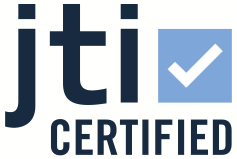
Swiss researchers eye 3D printed corneal implants

Swiss researchers plan to use 3D printers to produce artificial corneas. This could repair eye damage in the future, says the Swiss Federal Laboratories for Materials Science and Technology (Empa).
+ Get the most important news from Switzerland in your inbox
However, it will be several years before such printed corneal implants are used clinically, Markus Rottmar, Head of the Empa Biointerfaces Laboratory in St Gallen, told the Keystone-SDA news agency. The project only began around one and a half months ago.
The cornea is the transparent protective layer at the front of the eye. If it is damaged, this can lead to severe visual impairment and even blindness. Millions of people worldwide are affected, but donor corneas are rare.
+ Swiss implant makers come under the microscope
The team of researchers from Empa, the University of Zurich, the Zurich Veterinary Hospital and Radboud University in the Netherlands hope to find a remedy with the printed cornea.
Closing defects with precision
The implant will consist of a hydrogel made of collagen and hyaluronic acid – two substances produced naturally in the body. With the help of 3D printing, the artificial cornea can be customised to the shape of the respective eye. This is intended to close defects precisely without the need for sutures.
According to Empa, this would avoid longer operating times and post-operative complications such as infection, scarring or inflammation.
In the long term, the material will also be equipped with stem cells from the eye to support the healing of the eye.
Once the current project has been completed, preclinical studies will follow before the implant can later be tested in clinical trials on humans. According to Empa, the project is being financed thanks to a grant from a foundation.

More
Spinal implant helps man with Parkinson’s to walk without falling (video)
Translated from German with DeepL/mga
We select the most relevant news for an international audience and use automatic translation tools to translate them into English. A journalist then reviews the translation for clarity and accuracy before publication.
Providing you with automatically translated news gives us the time to write more in-depth articles. The news stories we select have been written and carefully fact-checked by an external editorial team from news agencies such as Bloomberg or Keystone.
If you have any questions about how we work, write to us at english@swissinfo.ch.

In compliance with the JTI standards
More: SWI swissinfo.ch certified by the Journalism Trust Initiative






























You can find an overview of ongoing debates with our journalists here . Please join us!
If you want to start a conversation about a topic raised in this article or want to report factual errors, email us at english@swissinfo.ch.